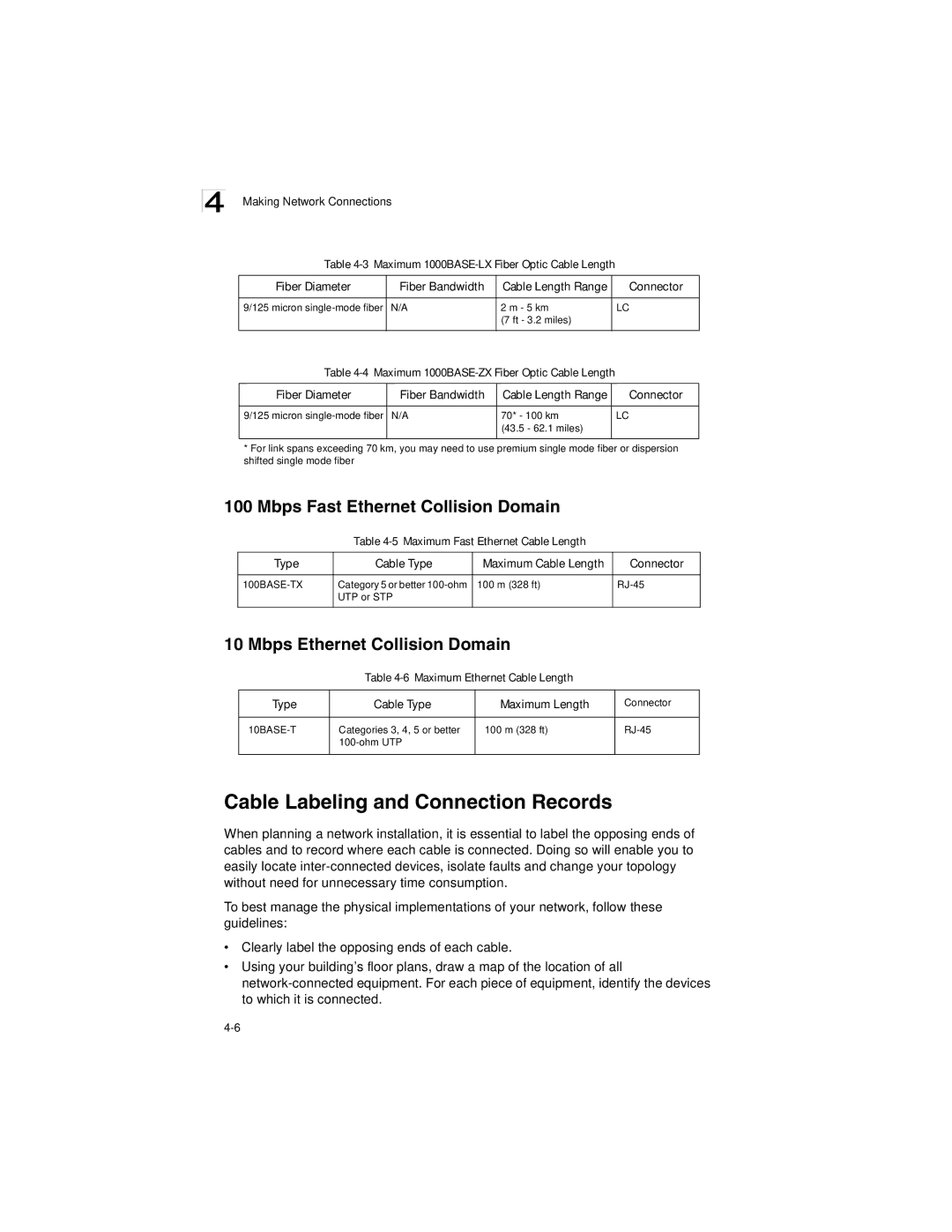4 Making Network Connections
Table | Maximum |
| ||
Fiber Diameter |
| Fiber Bandwidth | Cable Length Range | Connector |
|
|
|
| |
9/125 micron | N/A | 2 m - 5 km | LC | |
|
|
| (7 ft - 3.2 miles) |
|
Table | Maximum |
| ||
|
|
|
|
|
Fiber Diameter |
| Fiber Bandwidth | Cable Length Range | Connector |
|
|
|
| |
9/125 micron | N/A | 70* - 100 km | LC | |
|
|
| (43.5 - 62.1 miles) |
|
*For link spans exceeding 70 km, you may need to use premium single mode fiber or dispersion shifted single mode fiber
100 Mbps Fast Ethernet Collision Domain
Table
Type | Cable Type | Maximum Cable Length | Connector |
|
|
|
|
Category 5 or better | 100 m (328 ft) | ||
| UTP or STP |
|
|
10 Mbps Ethernet Collision Domain
Table
Type | Cable Type | Maximum Length | Connector |
|
|
|
|
Categories 3, 4, 5 or better | 100 m (328 ft) | ||
|
|
| |
|
|
|
|
Cable Labeling and Connection Records
When planning a network installation, it is essential to label the opposing ends of cables and to record where each cable is connected. Doing so will enable you to easily locate
To best manage the physical implementations of your network, follow these guidelines:
•Clearly label the opposing ends of each cable.
•Using your building’s floor plans, draw a map of the location of all
